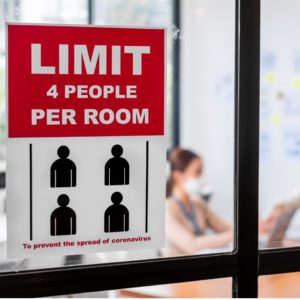2020 was the year of functionality. 2021 is the year of user experience, according to Howard Givner, founder and executive director of Event Leadership Institute (ELI). This prediction came during a webinar hosted by ELI, “State of the Event Industry 2021.” Attended by more than 1,500 event industry professionals, Givner shared more than 25 predictions for the meetings and events industry.
In addition to Givner’s insights on the future, he shared what he believes meetings professionals should set their sights on—and what they should look out for.
Hybrid Events and In-person Unpredictability

Givner has a misgiving about the initial return to in-person events: unpredictability of attendance. “I think you’re going to see attendees wanting to wait until the last minute to register; they’re going to wait to book travel; and of the people you do register, you may get a lot more no-shows than we are used to.”
He thinks the counterbalance could be increased attention to virtual events. “There’s a ton of money being put into virtual events platforms,” Givner says. He referenced Hopin, a virtual venue platform that raised $100 million over the last two months, to show just how much confidence there is in the future of virtual meetings.
Such funding should significantly increase the production value of the virtual event landscape. “It’s really going to make a big difference in terms of what the user experience is,” he says.
And with this should also come a different experience for the at-home attendee. “When you look at hybrid events, the remote audiences are going to start to get unique, exclusive content that the in-person attendees are not getting. This is where a lot of hybrid events fell short in the past,” Givner says.
He used sporting events to underscore his point: Post-game interviews and highlights are seen by at-home audiences and not by live attendees, giving a totally different and immersive experience the live audience can’t get. Meeting professionals, he says, should ask what they can borrow from this to make their virtual experiences something special and different, too.
The Flipping of Hybrid Events
 “Hybrid event planning is going to be flipped,” Givner predicts. Meaning what exactly? Long story short, it was traditionally the case that meeting in person was at the center of event planning, and cameras and virtual attendance were afterthoughts. “Moving forward, I think we’re going to start with the virtual event first, as the base.” This could mean that cancellations, COVID-related or otherwise, will be less likely. Once everything subsides, the in-person component may become the add-on.
“Hybrid event planning is going to be flipped,” Givner predicts. Meaning what exactly? Long story short, it was traditionally the case that meeting in person was at the center of event planning, and cameras and virtual attendance were afterthoughts. “Moving forward, I think we’re going to start with the virtual event first, as the base.” This could mean that cancellations, COVID-related or otherwise, will be less likely. Once everything subsides, the in-person component may become the add-on.
Givner admits to having mixed feelings about the current shift in room setups. “I appreciate organizations trying to make this work, but just because you can do it doesn’t mean you should do it,” he says. Spreading out as far as we can to be socially distanced “isn’t really even that effective,” according to Givner.
“What not enough people are talking about is venue economics,” he says—in other words, allowing 100 people in a room designed for 1,000. That decrease in people often translates to a decrease in revenue. While it may work for the time being, Givner questions its sustainability.
Virtual as a Marketing Opportunity

For organizations whose primary revenue source is not the event but its products, going virtual is an incredible marketing opportunity, Givner says, but what’s needed is a shift of mindset from viewing your event as a revenue source to that of a marketing vehicle.
As an example, he cites a Microsoft event in 2019 that was held in person (at $2,400 a head) and had 6,000 attendees. Microsoft’s events lean toward its products, so the more eyes, the better. In 2020, when this same Microsoft event went virtual, it garnered attendance of 197,000 people—but entry was free. As the focus was less on generating revenue, the company reaped a huge spike in potential customers.
A Strong Demand for In-person Meetings
Despite the many positives of going virtual or hybrid, many planners—and clients—still can’t wait to be face to face again, as evidenced by another participant in EIC’s webinar, Eric Altschul, CEO of Global Services, a subsidiary of the recently assembled Etherio Group, a meeting, event and incentive provider.
While Altschul is certain his organization will keep events hybrid, he and his team are trying to figure out the best way to execute. “There are a number of trends that are going to stay with us, even as the pandemic passes. The most obvious is ensuring in-person meetings have a hybrid component. However, what is less obvious are the ways in which we will incorporate those who aren’t in person into the meeting, so they are able to connect with their colleagues,” says Altschul.
Altschul says Etherio’s 2021 has already started strong, with “incredibly strong demand” from many of its clients who are asking a return to in-person or hybrid meetings for later this year and early 2022, an auspicious sign.
Altschul believes we’ll also see more domestic incentive trips and a strong return to incentive travel in late 2022. “We are seeing a trend of senior leadership teams looking to reconnect, and the best, safest way they can do that is through takeovers of small, exclusive hotels and resorts,” he says.




